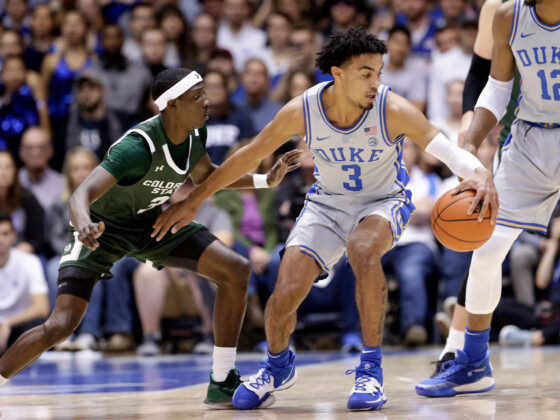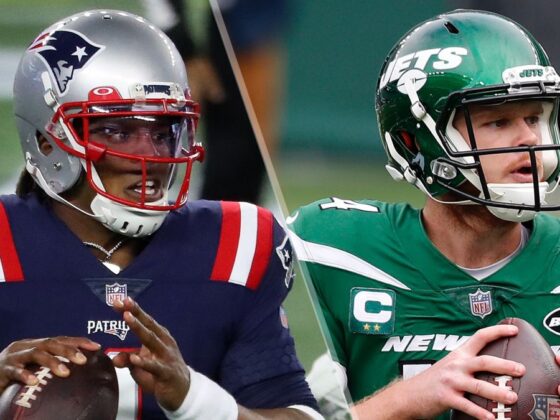The current market is not able to satisfy the needs of consumers. This has led to a new wave of companies that are rethinking their business models and looking for innovative ways to provide value in an industry that is constantly changing.
On Friday afternoon, it was about an hour before the MLB trade deadline. As he usually does the day before he begins, Kyle Hendricks went to the outfield on the visitors’ side of Nationals Park to play catch. When he returned to the Chicago Cubs’ locker room, the squad he helped win the 2016 World Series was no longer recognized.
It had been completely demolished.
“Until I went back in, I didn’t realize the full extent,” Hendricks said over the weekend. “It’s been very difficult. It is still the case. It’ll take some time to absorb everything. It’s simply different around here now that those people are gone. It had been a whirlwind of a day. It’s likely that you’re still digesting everything. It will take some time.”
Hendricks and the few surviving members of the squad that broke the franchise’s 108-year championship drought are beginning again. Is this, however, a sign that the Cubs are once again in full rebuild mode, with years of mediocrity ahead of them? Or does Jed Hoyer, the president of baseball operations, have a more expedient plan?
While his trade-deadline moves seem to support the former plan, he claims the reverse is true: the Cubs’ dramatic July dismantling will accelerate their return to greatness.
Knowledge the team’s future starts with an understanding of the events that led to the trade of four great players. It had been a long time coming.
‘You don’t squander a crisis,’ says the author.
Hoyer had no option due to a series of circumstances, some of which were caused by the Cubs themselves and others which were the cost of going for broke nearly every year. This includes the following:
• Other than Hendricks, the Cubs have been unable to sign any of their key players to long-term contracts. Both Hoyer and previous executive Theo Epstein are irritated by it. They think they made reasonable proposals, but they have been turned down at every step.
Hoyer stated on Chicago radio Monday morning, “That will probably be my biggest source of aggravation from this period.”
• Due to the Cubs’ rebuilding process, several important players were on the same arbitration clock. At the same time, Kris Bryant, Javier Baez, and others began to become more costly, and they were all set to reach free agency.
Why The Cubs never developed a successor to their 2016 World Series champions, particularly on the mound, meaning the team’s sustained success was reliant on the same core.
2 Related
To patch holes while trying to maintain a winning window, they traded away the greatest young talent they did have. Meanwhile, the championship-winning players never reached the same level again, which was exacerbated by the absence of reinforcements in the lineup and rotation.
• The organization’s expenditures was halted. The only major offseason signing following Yu Darvish’s six-year agreement before the 2018 season was Craig Kimbrel’s three-year, $43 million deal, which came only after Ben Zobrist’s non-paid leave freed up some money. Darvish was then released by the Cubs, along with the $59 million left on his $126 million deal, just when he was performing at his best. During the epidemic, ownership claimed to be experiencing “biblical losses,” and instead of adding to a 2023 playoff squad, they removed from it.
• Finally, by assembling a squad full of future free agents, the club has set itself up for this exact deadline situation. Darvish was replaced by Zach Davies, who is nearing the conclusion of his six-year stint as the team’s top pitcher. Joc Pederson, Trevor Williams, and Jake Arrieta all received one-year contracts. When the club dropped out of contention, Hoyer was forced to make the changes he did last week or risk losing half of his squad at the conclusion of the season with nothing to show for it.
“You don’t squander a crisis,” Hoyer remarked after the deadline passed on Friday. “There’s no use in going halfway.”
With all of this in mind, Hoyer approached the deadline knowing that committing to selling one key player meant committing to trading them all. For Bryant, Baez, Anthony Rizzo, and Kimbrel, all he needed was the proper return.
“We targeted guys we truly loved with each deal, and we wouldn’t shift from that stance,” he added. “Was it tough on an emotional level? Yes. Do I believe that was the best decision for the organization? Yes, I do.”
How does this compare to the previous reconstruction?
Late in 2011, Hoyer and his old employer, Epstein, decided on a strategy for the team that resulted in a World Series championship. Because of changes to the collective bargaining agreement, the two determined that a full overhaul was necessary, and they set out to rebuild their team from the ground up — even if it meant hitting rock bottom.
While Friday’s actions seem to be the start of a similar strategy, Hoyer hasn’t committed to anything more than exploiting a squad full of unrestricted free agents.
“Over the last few days, I believe we sped things up a lot,” Hoyer said. “We’ll get down and plan how to put together the next great Cubs squad. I don’t care whether you seem to be competing or if you come in second place. I’m interested in competing for championships.”
The Cubs club that David Ross will oversee for the remainder of 2023 is a far cry from the one that began the season in Chicago after a flurry of deadline transactions. USA TODAY Sports’ Matt Marton
Even still, it’s disconcerting to see such a brilliant bunch of guys go in less than a day. Especially in light of what the St. Louis Cardinals, another club in the same division with a comparable record, did — or didn’t do — before the deadline. Despite failing to live up to the expectations set when Nolan Arenado was acquired this winter, St. Louis has resisted the temptation to make roster cuts in order to acquire prospects. In fact, the Cardinals bolstered their pitching staff by acquiring experienced pitchers J.A. Happ and Jon Lester in trades.
“Overall, we still want to compete,” said John Mozeliak, president of baseball operations. “We’ll see if we can go on that run and create some noise while we’re still in the Central… We still trust in this squad, but we also believe in where we want to go next year, so it was a major factor in our choice.”
The Cardinals have a little chance of catching the Milwaukee Brewers this season, but Mozeliak’s plan is to keep moving ahead while the Cubs regroup.
“Obviously, a very different strategy,” Mozeliak said, “but they were in a situation where they had a lot of contracts that were about to expire.” “You have one team that has moved on to 2023, and there are a handful of us who are still concerned about 2023.”
The issue now is when the Cubs will produce a club capable of competing with the Cardinals and Brewers at the top of the division.
“The objective is to put together the next great Cubs club, not the next OK Cubs team,” Hoyer said. “I have no idea what we’re going to do yet, and no one else does either.”
“The natural thing to do here is to make comparisons to what we’ve done before.”
Hoyer, on the other hand, is certain that they will not repeat the mistakes of 2012. They’ve added 11 fresh faces to an improved farm system in the last three weeks, plus four more from the Darvish deal.

Here’s how all 30 teams fared during a crazy trade deadline, from huge winners to clubs that did nothing. (ESPN+) Bradford Doolittle
![]() Every transaction is graded | Passan
Every transaction is graded | Passan
Will they speed up the process by signing one of the numerous free-agent shortstops available this offseason? Will they trade some of their recent acquisitions for big league talent? Perhaps the lengthier approach will be required once again. The blueprint has yet to be created.
“That route may include allowing the garden to develop for a long period in order to allow those prospects to mature,” Hoyer said. “At times, it may imply speeding things up via free agency.”
Some of the components are already in place. Infield mainstays Nick Madrigal and 2018 first-round pick Nico Hoerner were acquired in the trade that sent Kimbrel to the White Sox. Willson Contreras, the team’s catcher, said over the weekend that he would want to stay, and Hendricks is under contract through 2024. Over the next two months, the Cubs will test out several young pitchers in the hopes of developing the remainder of the rotation rather than purchasing one.
Hendricks said, “We trust the people around us.” “Whatever the strategy is, they clearly have one in place.” We’ll simply take it on faith.
“I’m not sure where we’re heading, but I’m certain it’ll all work out in the end.”
When asked whether there was a compelling trade narrative from the frantic weeks building up to the deadline, Hoyer stopped and instead twisted it forward.
He replied, “I don’t want to be on the [subtracting] side of the deal.” “That’s the main point I’d want to make. I have a great deal of admiration for the teams we worked with. They were ready to take the risk. That is exactly what you should do.”


